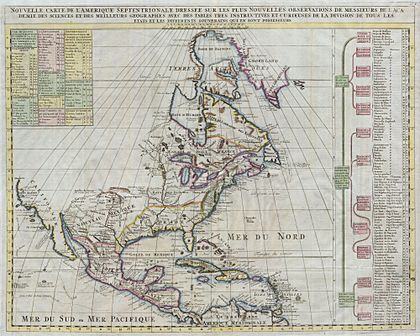Seven Cities of Gold facts for kids
The story of the Seven Cities of Gold, also known as the Seven Cities of Cíbola, was a very popular legend in the 1500s. People believed these cities were full of amazing riches. The legend was connected to the Pueblos, which were towns built by Native American people in what is now New Mexico and the southwestern part of the United States.
Other similar legends about lost cities of gold included El Dorado, Paititi, and Quivira.
How Did the Legend Begin?
In the 1500s, Spanish explorers in New Spain (which is now Mexico) started hearing exciting rumors. They heard about "Seven Cities of Gold" called "Cíbola" that were far away to the north, across the desert.
These stories might have come from an older legend in Portugal. This legend talked about seven cities built on an island called Antillia by a group of Catholic explorers long ago. Another idea is that the stories came from the capture of a city in Spain by invaders in 1150.
The Spanish tales became much stronger because of four explorers who survived a failed journey. These survivors, including Álvar Núñez Cabeza de Vaca and his slave Estevanico, eventually returned to New Spain. They told everyone that Native Americans had told them stories about cities with endless gold and treasures.
What Did Explorers Find?
In 1539, a Franciscan friar named Marco da Nizza reached a place called Zuni Pueblo. He believed it was one of the cities of Cíbola. He described it as a very rich place.
However, when the Spanish explorer Francisco Vázquez de Coronado finally arrived at Cíbola in 1540, he found something very different. The stories were not true! There were no amazing treasures like the friar had described. Instead, he found towns made of adobe (a type of mud brick).
While Coronado was in these towns, he heard another rumor from a Native American man he called "the Turk." This man told him about a city called Quivira that had lots of gold. It was supposedly on the other side of the Great Plains. But when Coronado finally reached Quivira (which might have been in modern Kansas, Nebraska, or Missouri), he found only small villages with straw-thatched roofs, not gold.
Were There Any Riches?
Even though the Spanish didn't find cities of gold, the area around the Zuni Pueblo did have some valuable things. The Spanish soon discovered rich mines of copper and turquoise. The Pueblo Indians, including the Zuni people, are still famous today for their beautiful turquoise and silver jewelry. So, while it wasn't gold, there was still wealth to be found!
See also
 In Spanish: Cíbola para niños
In Spanish: Cíbola para niños


